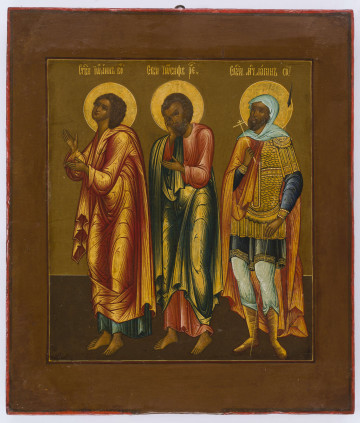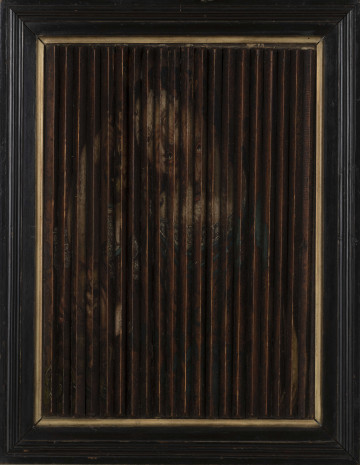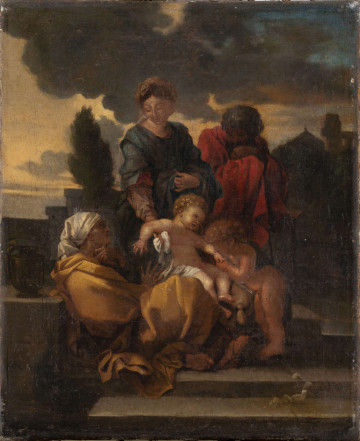
Ascension / Saints John, Joseph and Longinus
1801 — 1900
National Museum in Lublin
Part of the collection: European painting
According to the biblical account, Mary Magdalene came from Magdala, a town on the Sea of Galilee. In European culture, she has become a figure that has aroused interest over the centuries among believers and poets and painters. It has undoubtedly contributed to the development of a varied iconography of the saint. However, to try to discover the identity of this mysterious figure, it is necessary to go back to the New Testament. Although there are only a few references to her, they are all connected to the most critical facts of Christ's life. Starting from the moment when Jesus cast out seven evil spirits from her, Mary Magdalene is included among his listeners and, together with other women, cares for the apostles who travel with him. Another reference is made when the evangelists mention her, writing that she was present at the crucifixion and death of Christ, removal from the cross and laying the body in the tomb. Mary Magdalene was also one of the three women who went to the burial place of the Crucified but found it empty. When the saint came to see the stone rejected, she ran to the apostles and informed them of this. She then returned to the tomb, where the risen Jesus appeared to her as a gardener. Thus, it was Mary Magdalene who became the messenger who announced to the apostles that Christ was alive. That is why she is sometimes called apostola apostolorum – an apostle of the apostles.
Due to the great interest in the saint's life throughout the ages, artists were more and more eager to use various motifs from her biography, from the times of debauchery through the scene of her conversion at the feast of Simon the Leper to her penitential life in seclusion. At that time, the saint was most often depicted in a hermitage when, having abandoned the riches of worldly life, she devoted herself to prayer. The theme of Mary Magdalene's penance became particularly popular during the Counter-Reformation when the story of the saint's life proved to be ideal didactic material for preachers. The penitent young woman, often with her breasts uncovered, gained new attributes: a skull or a book, which had a quantitative character, drawing the faithful's attention to the futility of the comforts of life on earth. Not surprisingly, such an image of the saint was often used to decorate confessionals.
Author / creator
Dimensions
cały obiekt: height: 25,5 cm, width: 33 cm
Object type
painting
Technique
oil technique
Material
plank, oil-based paint
Creation time / dating
Creation / finding place
Owner
The National Museum in Lublin
Identification number
Location / status

1801 — 1900
National Museum in Lublin

1801 — 1900
National Museum in Lublin

1630 — 1650
National Museum in Lublin
DISCOVER this TOPIC
National Museum in Szczecin
DISCOVER this PATH
Educational path